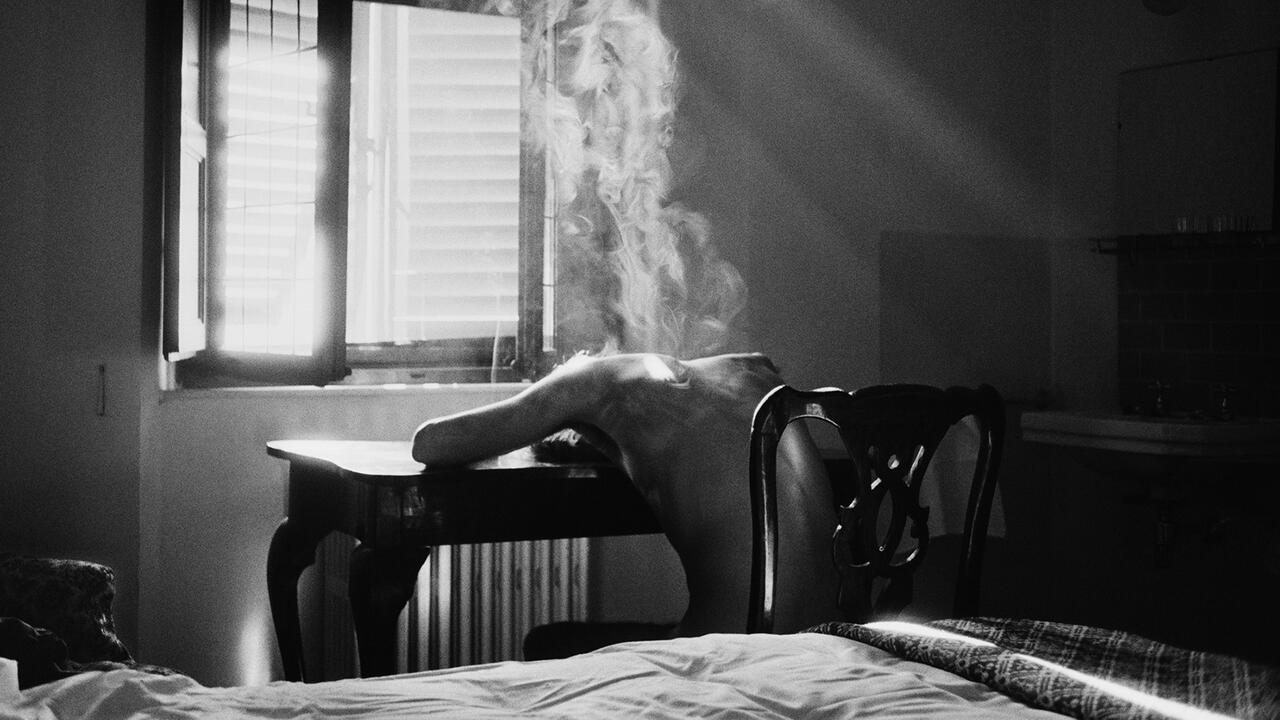The Mexican Suitcase
International Center of Photography, New York, USA
International Center of Photography, New York, USA

As Robert Capa and Gerda Taro cheerfully sipped drinks at Café du Dôme in Paris in 1936, their faces – captured on a strip of negative only recently rediscovered – had yet to register the travails about to consume them. In retrospect, the image seems to register an uneasy calm before the storm – one that would originate on the seemingly distant Iberian peninsula, yet soon swell to consume Europe and the world. The Spanish Civil War, which Capa and Taro would come famously (and fatally, in the latter’s case) to document for a range of international magazines, appears far away from the waning halcyon days of Montparnasse bohemia.
Tellingly, the very next frame on the contact sheet reveals a different sort of assembly: a number of individuals in Paris staring at a display of outsized Spanish Civil War posters, sent over the Pyrenees to the French government by the Centre de Propagande des Republicans Nationaux. If the French government turned a largely deaf ear to Spain’s cries during these years, Capa, Taro and their colleague David Seymour (a.k.a. Chim) proved vital to that same propaganda campaign, turning their cameras to detail nearly every dimension of the assault on the democratically elected Spanish Republicans, undertaken by General Franco with support from Hitler and Mussolini. Coinciding with the diffusion of the handheld Leica camera – as well as the extension of the theatre of battle far beyond its traditional domain, into the lives of ordinary citizens – the Spanish Civil War ushered in not only new technologies of destruction, but also innovations in their documentation. Capa’s, Chim’s and Taro’s contributions to these – and to what Henri Cartier-Bresson (a friend of Capa and Chim) would later deem ‘the decisive moment’ – were formative and profound.
‘The Mexican Suitcase: Rediscovered Spanish Civil War Negatives by Capa, Chim and Taro’ at the International Center of Photography represents a homecoming of sorts, since it was Capa’s brother, Cornell, who founded the centre in honour of his older sibling’s legacy. Believed lost since Capa hurriedly nestled numerous strips of film in three small boxes in 1939, 4,500 negatives – originally rolled and nestled inside – provide the raw material for the exhibition. Curator Cynthia Young has included both original and recent prints, scrupulously and plainly distinguishing the former from the latter; aside from an unmistakable patina, the period prints are framed so as to show the frayed edges of the photographic paper. Along with whole contact sheets, these are, in turn, juxtaposed with the original publications in which they originally appeared (including AIZ, Regards, Le Soir and The Fight, the journal of the American anti-Fascist League). Laid out in display cases, these provide extensive chronological and journalistic context, as well a sense of how certain images became cropped and used to rhetorical ends.
Almost no incident or individual from the three-year conflagration seems to have escaped the three photographers’ cameras, whether Federico García Lorca in Madrid shortly before his death at the hands of the Guardia Civil in Granada, or the celebrations of the anniversary of the Russian Revolution on the streets of Barcelona, or a wry Ernest Hemingway flanked by two Republican soldiers. The contact sheets help to situate both specific shots and the overall context of each roll, which range from capturing Republican soldiers helping peasants with the harvest on the Córdoba front in July 1937, to Taro’s images of retreating soldiers from the Segovia front. Her negatives from Brunete – the site of a savage battle – appear washed out or stained, no longer bearing the punctilious precision of earlier rolls. It is here that she would die, aged only 26, and it is difficult not to read into those more frenzied contact sheets the portent of her – and the Republican – fate. As one of the world’s first female photojournalists, and the first to be killed on the job, Taro not only anticipated the work of Lee Miller, but also contributed to Capa’s own – more renowned – pioneering of journalistic photography from the front lines.
Capa’s coverage for Life in December of that same year featured the blurry photograph of a soldier in action at the Battle of Río Segre. ‘This is what scenery really looks like in modern war,’ reads the caption. The article noted that Capa’s coverage came with ‘extreme personal risk.’ Nearby, a Time magazine spread from 1938 features a story on Republican posters and Capa’s photography; a column on the facing page discusses the first exhibition of American abstract art. The relationship between these phenomena, and the consequence of the Spanish Civil War to the fate of aesthetics at large, is a vast and important problem.
But while the striking formal dimensions of these images deserve attention, it is the images to which they give form that are most haunting – and sickeningly prophetic of a century yet to unfold. The exhibition concludes with photographs of the internment camps at Argèles-sur-Mer, where fleeing Republicans took refuge in makeshift tents and straw beds. Capa’s last pictures of refugees marching into France in March 1939, seem to need no caption.
Sitting in the middle of the gallery are the three original battered boxes in which the original negatives were smuggled out of Spain – the contents of the eponymous ‘Mexican suitcase’. Looking themselves like tattered refugees from the previous century’s parade of horrors, they sit like mute emissaries from some hellish place. The fastidious grid of their compartments belies the horrors registered on the negatives long nestled inside.
























